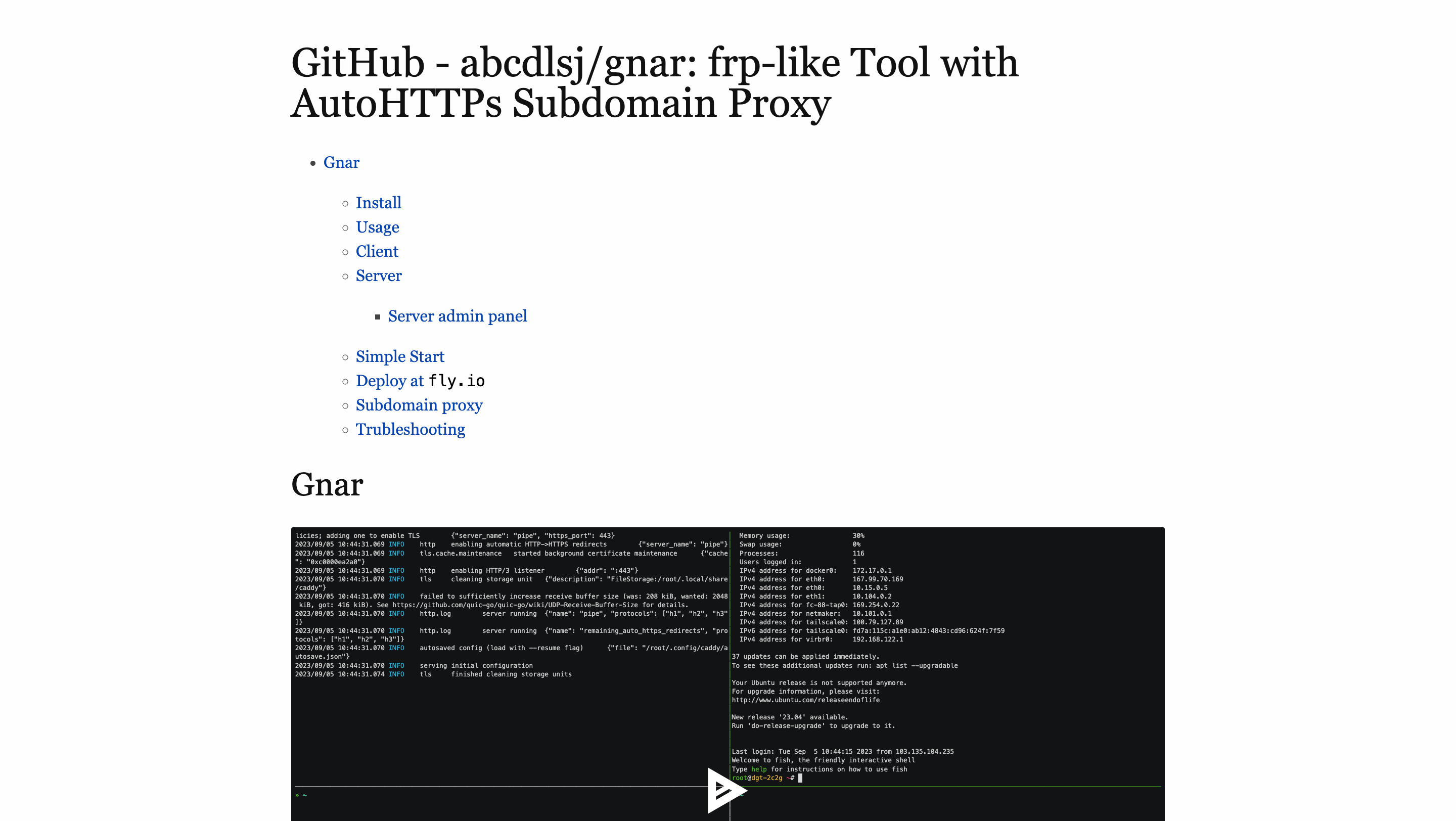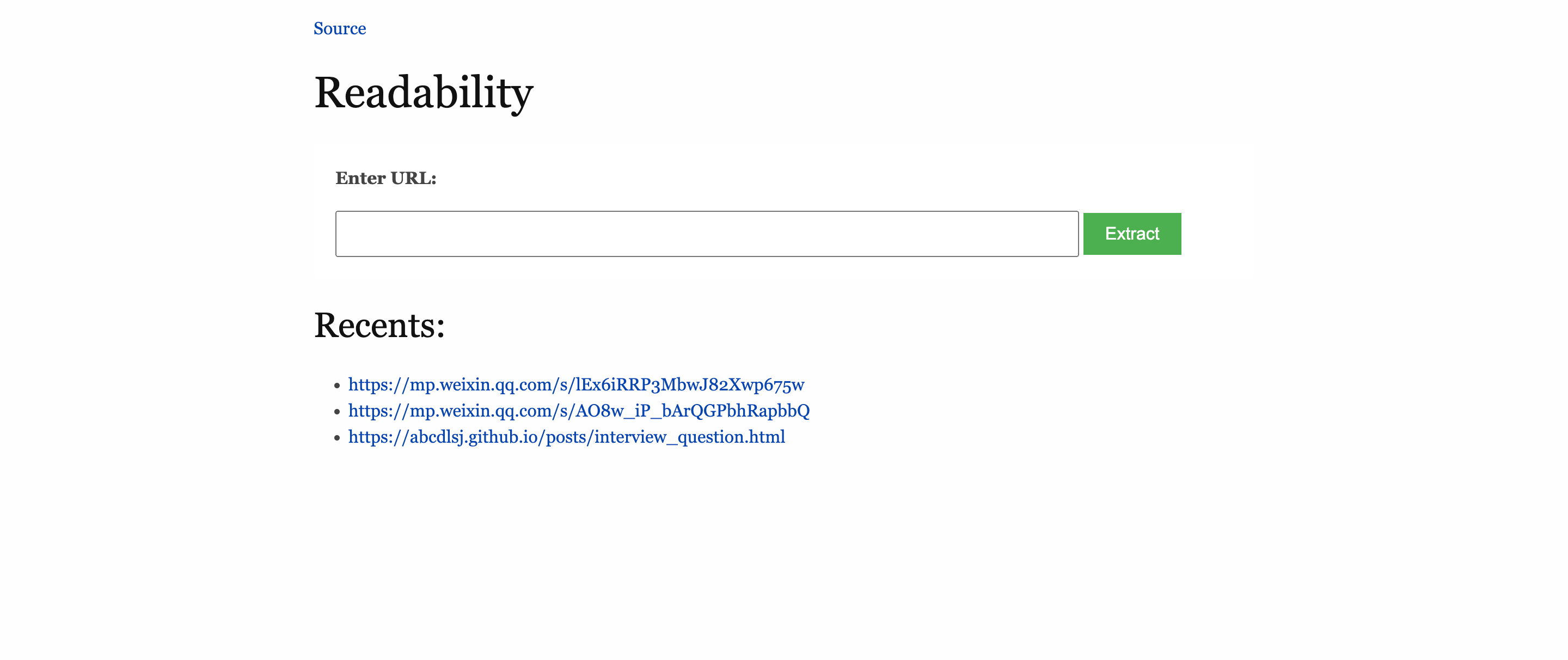Background
Many websites use various CSS styles, and some of them can be challenging to read. One way to improve readability is to use a browser extension. Alternatively, you can create your own website WIKI - readability tool. There are numerous language options and implementations available for this purpose. In this case, we will use Go to implement it. You will see how simple it is.
You can find all the code on my GitHub repository here
Do it
Start by reading the example code for go-readability to understand its functionality and usage.
You can write the following code, which can be used as a command-line interface (CLI) tool.
package main
import (
"flag"
"fmt"
"log"
"os"
"time"
readability "github.com/go-shiori/go-readability"
)
func extract(url string) readability.Article {
article, err := readability.FromURL(url, 30*time.Second)
if err != nil {
log.Fatalf("failed to parse %s, %v\n", url, err)
}
fmt.Printf("Title : %s\n", article.Title)
fmt.Printf("Author : %s\n", article.Byline)
fmt.Printf("SiteName: %s\n", article.SiteName)
fmt.Printf("Content : %s\n", article.Content)
return article
}
func main() {
var inputurl string
flag.StringVar(&inputurl, "url", "", "URL")
flag.Parse()
if inputurl == "" {
flag.Usage()
os.Exit(1)
}
extract(inputurl)
}
It will work as expected.
However, there are instances where a terminal environment may not be available. In such cases, you can run it as a web server using Go's http package and template library to implement it. (In fact, I used ChatGPT to provide this demo. Cost 5 minute..)
index.html
<!DOCTYPE html>
<html>
<head>
<title>Extract Article Content</title>
</head>
<body>
<h1>Extract Article Content</h1>
<form action="/read" method="post">
<label for="url">Enter URL:</label>
<input type="text" id="url" name="url">
<input type="submit" value="Extract">
</form>
</body>
</html>
article.html
<!DOCTYPE html>
<html>
<head>
<title>Article Content</title>
</head>
<body>
<h1>{{.Title}}</h1>
{{if .ErrorMsg}}
<p>{{.ErrorMsg}}</p>
{{else}}
<div class="content">
{{.Content | safeHTML}}
</div>
{{end}}
</body>
</html>
main.go
var (
tmpl = ....
)
func main() {
http.HandleFunc("/", index)
http.HandleFunc("/read", read)
log.Fatal(http.ListenAndServe(":8080", nil))
}
func index(w http.ResponseWriter, r *http.Request) {
err := tmpl.ExecuteTemplate(w, "index.html", nil)
if err != nil {
http.Error(w, err.Error(), http.StatusInternalServerError)
}
}
func read(w http.ResponseWriter, r *http.Request) {
url := r.FormValue("url")
article, err := readability.FromURL(url, 30*time.Second)
if err != nil {
render(w, Article{URL: url, ErrorMsg: err.Error()})
return
}
render(w, Article{URL: url, Title: article.Title, Content: article.Content})
}
func render(w http.ResponseWriter, data Article) {
err := tmpl.ExecuteTemplate(w, "article.html", data)
if err != nil {
http.Error(w, err.Error(), http.StatusInternalServerError)
}
}
Implementing it as a web server is also straightforward.
Pack
Once we have the web server set up, it is generally a best practice to package it into a Docker image.
So you may need to pack the files index.html and article.html into a Docker image. In Go, you can use embed to embed these files into the binary.
var (
//go:embed *.html
tmplFiles embed.FS
funcMap = template.FuncMap{
"safeHTML": func(content string) template.HTML {
return template.HTML(content)
},
}
tmpl = template.Must(template.New("article.html").Funcs(funcMap).ParseFS(tmplFiles, "article.html", "index.html"))
)
embed will embed files at compile time.
Docker
Dockerfile
Go is a cross-platform programming language, you can copy the binary files into a base image to execute it. Here's an example of a Dockerfile:
Sample:
FROM alpine:latest
RUN mkdir /app
WORKDIR /app
COPY . .
CMD ["/app/readability"]
This Dockerfile copies the readability library into the image. Therefore, you need to compile it first using the command CGO_ENABLED=0 GOOS=linux go build -o readability.
I have also written a simple tool called nestg for packing binary files into a Docker image. You can find it at share/nestg
Usage of nestg:
-b string
go build flags
-i string
image name
-p string
port
Use nestg
nestg -i abcdlsj/readability -p 8080
Run
After building the Docker image, you can run it using the following command:
docker run -it --rm -p <HOST_PORT>:8080 abcdlsj/readability
Now you can access the website at http://localhost:<HOST_PORT>.
That's all of things you can done within 10 minute. Then, I will optimize it!
Optimize
Protect double slashes
You can enhance the functionality by utilizing URL parameters, making it more useful. I attempted to add an HTTP URL to the path, but encountered a problem with the parser.
For example, when you make a request to https://xxx.com/read/https://nautil.us/mirror-image-life-412729/, the appended path becomes https:/nautil.us/mirror-image-life-412729 due to the modification of // to /. This behavior is a result of the following explanation from the documentation:
ServeMux also takes care of sanitizing the URL request path and the Host header, stripping the port number and redirecting any request containing . or .. elements or repeated slashes to an equivalent, cleaner URL.
This information was obtained from the documentation found at net/http#ServeMux
I came across some useful links that discuss this issue:
- Stack Overflow - URL-escaped parameter not resolving properly
- Stack Overflow - How do I get Go's net/http package to stop removing double slashes?
- Github issue - net/http: ServeMux forcibly cleans double forward slash in URLs even when behaving as a gateway
The suggested solution is to use https://github.com/gorilla/mux or implement your own ServeMux. By using gorilla/mux, you simply need to call SkipClean(true). After doing this, the double slashes won't be removed.
http.Redirect clean double slashes
However, I encountered another issue when using redirects after submitting a link form. The redirect operation also removes the double slashes from the URL path, and unfortunately, gorilla/mux does not support handling this situation.
Because http.Redirect call url = path.Clean(url) to clean the URL, it also will clean double slashes.
Can see code /src/net/http/server.go
Luckily, there is a workaround available. You can escape the / characters as %2F to prevent the removal of double slashes during the redirect process.
You can find this version of the code at readability - 909fcb5e80fe. Please note that there are some additional adjustments made as well.
Pictures
After adding some simple CSS to the HTML template, you will see the result:


04/14/2024 Update:
Add recently viewed usingRedislistto store, andzsetstore view count commit.

Conclusion
This is a small weekend project.
Thanks for reading!